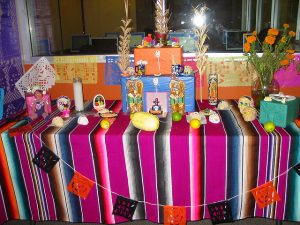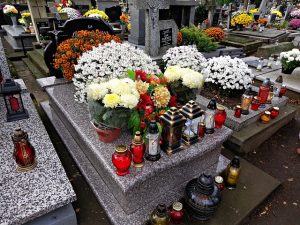This is a new blog series we're doing on religious and cultural holidays/celebrations that are commonly celebrated in Massachusetts to help create awareness for these traditions and their origins. If there's a particular religion or celebration you or someone you know participates in that doesn't appear on this list, let us know by leaving a comment on this post. Or, if you think we got something wrong, please also comment and let us know. We try to be as accurate as possible, but if there's a mistake, we want to correct it.
October 31 - November 1, 2018 - Samhain
Samhain, (pronounced sow-in) is a Wiccan holiday. It is one of their eight major holidays, or Sabbats. Although there are many different types of Wicca, all Wiccans share some common beliefs. They love and respect nature, and try to live in harmony with the earth. One of their main beliefs is "Harm None." This includes animals, humans, and nature.
Samhain is observed from sunset on October 31st to sunset on November 1st. It is the celebration that is the origin of Halloween. Samhain was first observed by Celtic Pagans. Samhain marked the Celtic New Year, the end of summer, and the end of the harvest season. It also signaled the beginning of winter, which they associated with death. On this day, the Celts believed the veil between the living and the dead was especially thin. This allowed spirits of the dead to visit the living.
The meaning behind Samhain remains the same today. There are many rituals associated with Samhain today. These include dancing, feasting, taking nature walks, and building altars to honor their ancestors.
There are many parts to the altars Wiccans build. To symbolize the end of the harvest, they include apples, pumpkins, or other fall crops. To represent the spirits of the dead, skulls or skeletons are placed on the altar. Photos of deceased family members are also added. Some Wiccans bake loaves of special Samhain bread for the altar, to feed visiting spirits.
Some Wiccan families cast a circle and think of their deceased loved ones. As a part of the ritual, they will share stories of their ancestors. Some families choose to visit the cemetery to honor their family members, instead.
To learn more about Samhain and Wicca, you can check out these items:
October 31, 2018 - November 2, 2018 - Día de los Muertos
November 1, 2018 - All Saints Day
On the first of November, Western Christian churchgoers will celebrate All Saints Day. This day is also known as All Hallows' Day, Hallowmas, or the Feast of All Saints. Eastern Christians celebrate this holiday on the first Sunday after Pentecost. This holiday is also a holy day of obligation in Catholicism. This means Catholics are required to attend mass that day. As the name suggests, the holiday honors all the Saints of the church. On this day, celebrators gather in prayer and worship.





Add a comment to: The Origins and Practices of: Samhain, Día de los Muertos, and All Saints Day